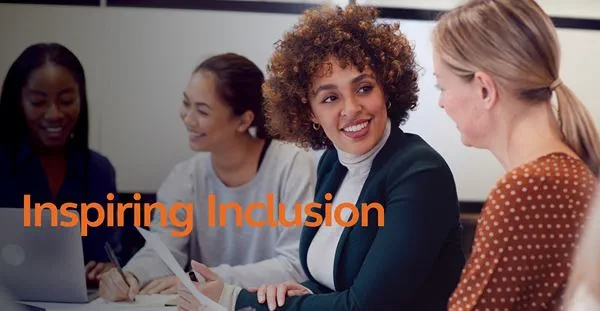True accessibility and inclusivity happens when we accept and account for ALL of our differences and diversities.
I knew when I went to my eye doctor recently that my prescription had changed. I was struggling to see at distance more and more lately, so I had accepted the fact that I would probably be ordering new glasses. After doing a little research, I decided to try mail order. I ended up choosing a mail order company that offered an added benefit: they would donate a pair of glasses to someone in need when I purchased my own pair.
This got me thinking about the full result of my choices. I had chosen other companies for similar reasons. There are shoe companies that donate a pair of shoes for every pair purchased. Socks, too. When I considered all these deliberate choices together, I realized the seemingly small decisions I make every day can have a significant impact on other people and in choosing these companies, I am making the world more accessible.
The true definition of ‘accessible’
When we talk about accessibility, we typically think of adjustments for the disabled community. Wheelchair ramps, automatic doors and handicapped parking spaces are normal components of an accessible space. Sometimes adjustments are more subtle, like a slight enlargement of print type or a thoughtful selection of a font when considering design for neurodiverse individuals. These are considerations that require active planning and execution – but what about other types of access?
I pose this question in response to a situation that recently emerged in my own home state of Colorado. Lawmakers recently passed HB 23-1004, Language Access in Insurance Documents. Among other requirements, the new law says that insurance companies must provide their products in the same languages in which they advertise them. The translations must be conducted by an individual or team of individuals who are certified by the American Translators Association or other qualified translator.
While the spirit of the law is full of good intentions, the unintended consequences have been catastrophic for the insurance industry in the state. Qualified translation of all that content is expensive. And, while the law was likely meant to encourage broader diversity and protect individuals from signing something they don’t understand, insurance companies have instead chosen to simply remove their diverse advertising to avoid paying for the translation services to support them. Now, insurance agents who have made their living assisting Latin communities are finding themselves out of work because they can no longer serve those customers. More people are going uninsured because they don’t know where to go for help and their options have significantly decreased. A law that was intended to improve access indirectly removed it by assuming that the affected businesses would do the right thing.
Why is this relevant?
This is just one example of a case in which the core issue is really about accessibility. It is very easy to think about accessibility in terms of physical differences. We can pinpoint the adjustments needed to open the doors for our physically and neurologically diverse colleagues. But the truth is that accessibility is more than that. We need to go further and challenge ourselves to consider all human differences when we think about accessibility. We speak different languages. Our individual cultures represent different levels of accessibility for different genders, different income classifications and different citizenship statuses. These considerations are often overlooked from an accessibility perspective, but it’s important to remember the full breadth of experience accessibility encompasses. For a space, a product, an event or a document to be truly accessible, anyone should be able to use it regardless of their physical or mental capability, the language they speak, the level of income they bring home, their country or culture of origin, their age, their legal status, or their level of education. True accessibility and inclusivity happens when we accept and account for all of our differences and diversities.




